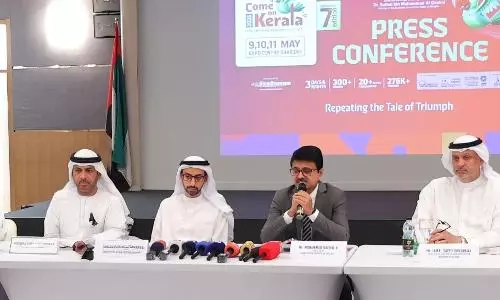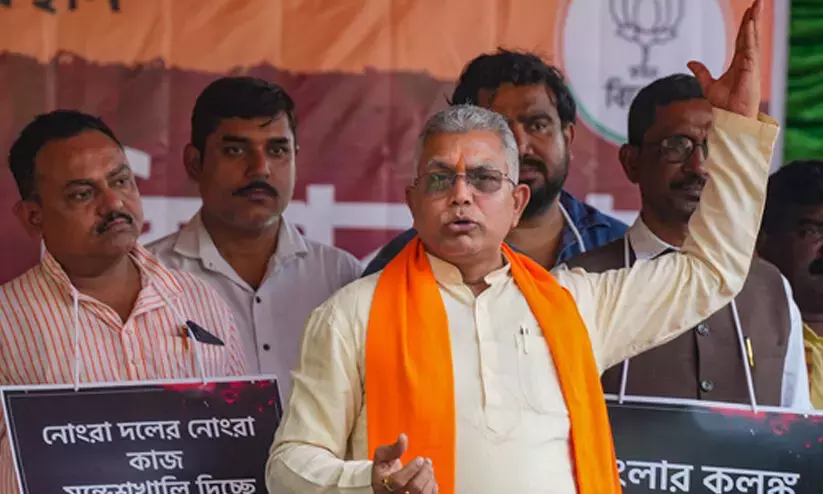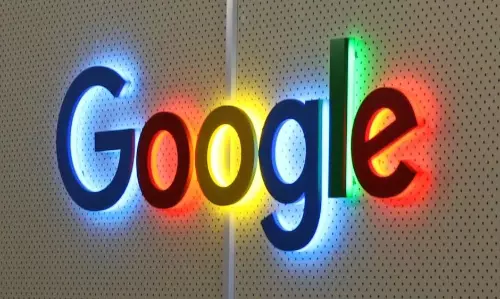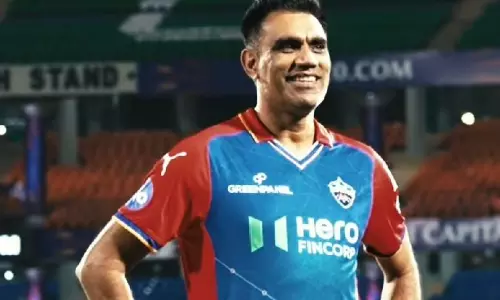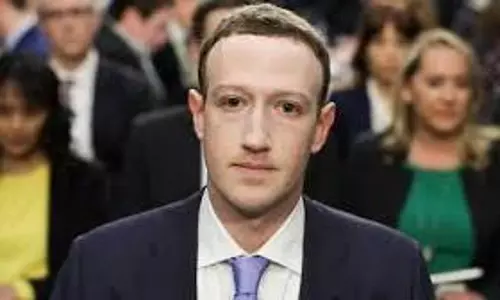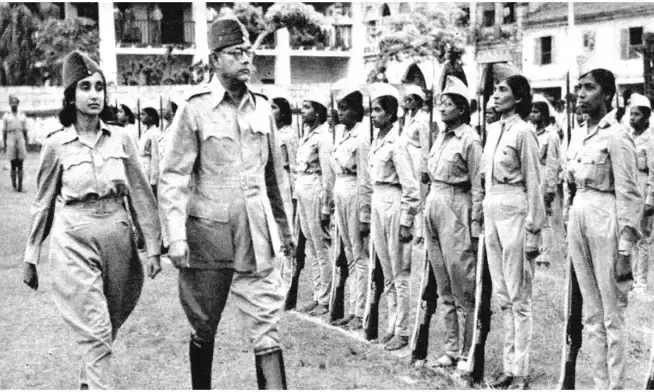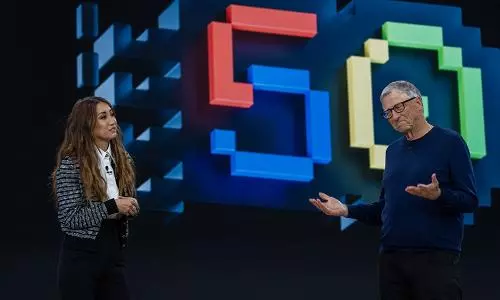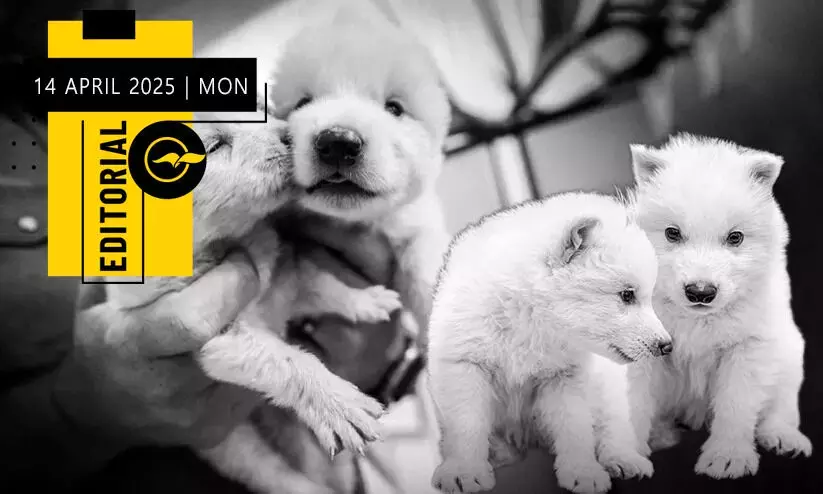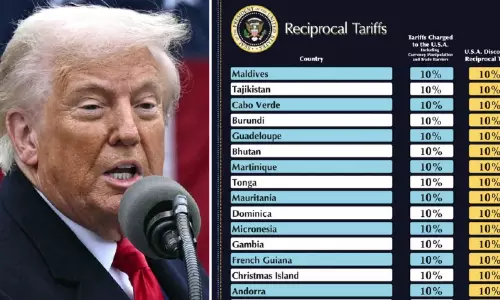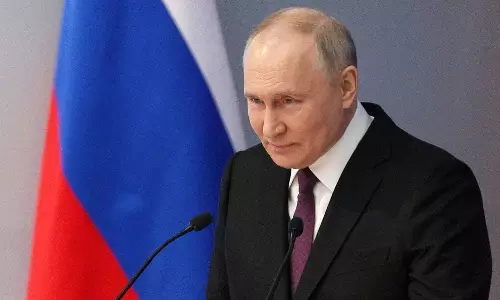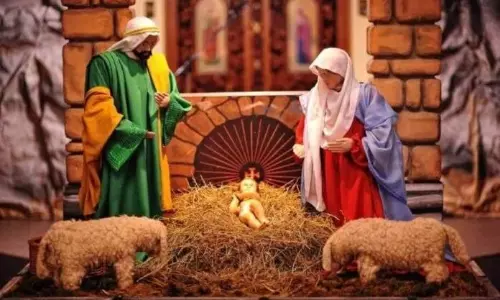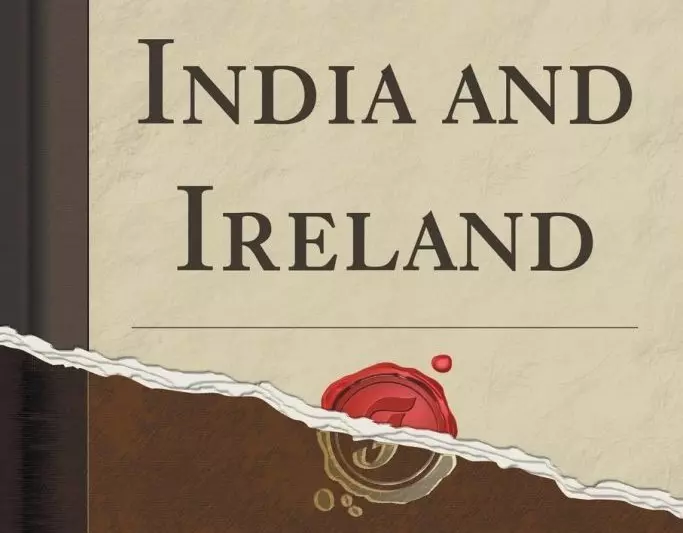
The Irish connection that shaped the Indian Independence movement
text_fieldsSimilarities
Irish and Indian nationalists collaborated and consulted with each other since the late 19th century. There are several striking parallels between the two. Both started out as chiefly constitutional movements aiming at autonomy within the British Empire. Both ended up with the maximalist wing becoming dominant. In both cases, the country split from the empire totally. The Irish Republic was officially inaugurated in 1949 and the Indian Republic in 1950, after independence in 1947. In both cases Partition accompanied independence. In both cases, independence came shortly after a world war. Both invented tricolour flags with the same three colours!
Some of the same individuals were involved in the administration of Ireland and India. Some soldiers and sailors were stationed in India and in Ireland at some point in their careers. Lord Cornwallis was Viceroy of Ireland in the 18th century and later Governor-General of India. He died in Calcutta (Kolkata).
Differences
The similarities between Ireland and India should not be overegged. There are of course many major dissimilarities between the two countries and their respective relationships with Great Britain.
One of the most obvious is geography. Ireland is part of the British Isles. The closest point in Ireland is only 9 miles from Great Britain. Whereas India is 4,000 miles away. Ireland is visible from Great Britain. By contrast, no Briton had ever set foot in India until the late 16th century when a Christian missionary travelled thither. In the Ice Age, there was no Irish Sea, so Ireland and Great Britain were the same island.
Most obviously the people of Ireland are the kith and kin of the people of Great Britain much though many Irish nationalists may seek to de-emphasise or even deny this historical truth. Irish people until recent times were virtually all white Christians. Almost every Irishman and Irishwoman has at least some Welsh, Scots or English blood. Many people in Wales, Scotland and England have some Irish stock.
Indians and white Britons have very different phenotypes. Therefore, one could usually tell at a glance if someone was Indian or British. It was not until the 20th century that there were significant numbers of British citizens of Indian descent. An Irishman was indistinguishable from his Welsh, Scots and English cousins.
The political connections between Ireland and Great Britain go back to the Dark Ages. There were kingdoms that spanned the Irish Sea. It was often faster and safer to travel by sea than by land. Irish nationalists claim that Ireland's political link with England and Wales only started in 1169 when a Cambro-Norman lord known as Strongbow landed in Ireland. But that is a fallacy.
Moreover, on New Year’s Day, the Act of Union took effect. Ireland was absorbed into the United Kingdom. Therefore, the United Kingdom of Great Britain and Ireland was born. Ireland was represented in the Parliament of the UK. India was never represented there, and no one ever suggested that India ought to undergo absorption into the domestic British state. It was too gigantic, too distant and too alien for that.
India’s political connection to Great Britain only started after the foundation of the Honourable East India Company on New Year’s Eve 1600. It was only later and very gradually that the East India Company and distantly the Government of England and Wales achieved some indirect control over certain regions of India. Therefore, the political links between Ireland and Great Britain started over 1000 years before those between India and Great Britain.
One of the most considerable dissimilarities between Hibernia and Hindustan was the presence of unionists in Ireland. Unionists were those who wanted to preserve the Union between Ireland and Great Britain. Unionists were mostly Protestants. They were preponderant in Ulster (the northern province), especially around the City of Belfast. In India there were loyalists. But from the 1920s onwards there was no large or vociferous body of opinion that was opposed to at least some measure of reform. In stark contrast, the Unionists were totally opposed to Home Rule let alone independence. The Unionists wished to thwart this for the whole of Ireland. If they could not save the whole of Ireland, they wished to at least save the province where they were in the majority: Ulster.
History of connections
In the late 19th century, some Indian elitists started to come to study in Great Britain and in Ireland. They encountered Irish nationalism. The Home Rule Party dominated Ireland. The Home Rulers wanted a parliament to be established in Dublin to handle internal Irish affairs. Ireland would still be represented in the UK Parliament at Westminster to deal with defence, foreign affairs and suchlike.
The Home Rule Movement started in India. An Irishwoman named Annie Besant was part of it.
Jawaharlal Nehru was fascinated by the Irish Home Rule Party when he was at Harrow School and Cambridge University. The Irish Home Rule Party had branches in Great Britain among the Irish community on that island. Nehru travelled to Dublin as part of his inquiry into the Home Rule Movement.
Indian nationalists in Great Britain found a receptive audience in the Labour Party. The then-tiny Labour Party had cordial relations with the Irish Home Rule Party.
Bear in mind that when the Indian National Congress was founded in 1885 it was often white Britons resident in India who were heavily involved. Its founder Allan Octavian Hume was a white man who had shifted to the Subcontinent. Whites were still involved in Congress until the 1920s but by then were very, very few. At most, the white community in India was 0.1%. Anglo-Indians (those of mixed white and Indian parentage) were perhaps another 0.1%.
In Ireland, it was said by the surveyor-general Sir John Davies in 1600 that if the population of Ireland were numbered by poll, then it would be found that more people were descended from post-1169 immigrants from Great Britain than from the autochthonous inhabitants. However, even though most if not all Irish folk have ancestors and ancestors from the neighbouring island, they tend to downplay this. They often say they are totally Irish and an ancestral connection to the island to the east is not of the slightest import.
Irish people even today are British by ethnicity and language and culture. The Irish language is a Celtic language indigenous to the British Isles. It is closely linked to Welsh, Scots Gaelic and Cornish – other Celtic languages in Great Britain. Before the Anglo-Saxons came, most people in Great Britain spoke Celtic languages. Some of those Ancient Britons who fled the Anglo-Saxons in the fifth century AD went to Ireland.
Irishmen were going to India in the 18th century as part of the East India Company. That was before Ireland was even in the UK.
--- --- --- ---
Irishmen were in India as civil servants, merchants, missionaries, soldiers and sailors. There were Irishmen serving in roles in the British Raj from the highest to the lowest. Some Viceroys of India were Irish such as the Marquess of Dufferin and Ava. The only viceroy ever to have been assassinated was the Earl of Mayo. Mayo is a county in Ireland. Lord Mayo’s surname is a very typical Irish one: Bourke.
Irishmen were instrumental in quelling what Britons call the Indian Mutiny. On the subcontinent, it is known as the First War of Independence. John Nicholson was one of the foremost British commanders in India in 1857. To Britishers, he is known as the Hero of Delhi. He was killed in a battle there. He is honoured by a statue outside his old school in Dungannon, Ireland. He is widely regarded in India as a murderous psychopath. His actions did not extend solely to slaying enemy fighters in combat. He ordered the murder of at least several hundred civilians.
Sir Henry Lawrence, another celebrated British military commander in India, was also an Irishman. He too was killed while crushing the Mutiny.
Field Marshall Earl Roberts of Kandahar was an Irishman who led the British Army and the Indian Army into Afghanistan. He too was Irish
Many Irishmen benefitted from the imperial cornucopia. They sat the exams for the Indian Civil Service as recounted in A Portrait of the Artist as a Young Man by James Joyce.
There were plenty of Irishmen who did not see Ireland as analogous to India. Some Irish nationalists were racists. They compared Ireland to other white nations that were not independent. Irish republicans (i.e. extreme nationalists) identified with the Dutch-speaking whites in South Africa in their fight against the British Empire. At that stage, Irish republicans did not care a fig for the black people of Africa.
Irish nationalists and republicans shared the supremacist assumptions of much of the white world in the 19th century and early 20th century. Irish Americans were often white supremacists.
In Ireland it may took axiomatic that India should be under Britannic mastery. The Home Rule Party believed that India belonged to Ireland as much as to Great Britain. In the mid to late 20th century Irish nationalists started to say that Ireland had been a colony when it was united with Great Britain. But that is a bare-faced lie. During the period when the entirety of Ireland was a parliamentary union with GB, Irish nationalists did not say it was a colonial situation.
Rudyard Kipling was the bard of the empire. His novel Kim is about a child who is half Irish and half Indian. His poem about British soldiers in India titled Soldiers Three features an Irishman.
The Raj’s worst moment was the Jallianwala Bagh Massacre. The Governor of the Punjab was Sir Michael O’Dwyer. He was a Catholic Irishman from Tipperary. The British officer of the Indian Army who ordered his men to fire on the unarmed crowd was Brigadier-General Reginald Edward Harry Dyer. Dyer was schooled in Ireland and of part Irish ancestry.
In 1920 some Irish soldiers in the British Army stationed at Jalandar, when India mutinied. They had heard false and exaggerated stories of the British Army and the police committing crimes in Ireland. The record of the Crown Forces in Ireland at the time is not unblemished but it is nothing like as ghastly as the republican lie machine would have people believe. One of those who mutinied was executed by firing squad. The rest were shown mercy.
Hunger strikes were used by Irish republicans from 1917 until 1981. Only a handful of hunger strikers died.
Some Indian nationalists followed suit. Notably Mohandas Karamchand Gandhi. Mr Gandhi’s ‘fast unto death’ never ended in his death. It ended in the deaths of many others following the riots.
In 1920 Terence MacSwiney went on hunger strike in Brixton Prison, London. The Lord Mayor of Cork (Ireland’s third city) detested the Union that he incarnated. He was half-English and half-Irish. He went on a hunger strike for release from prison. He was an officer in the IRA. Other IRA men counselled him to discontinue his hunger strike on the basis that his demand was too much. His Majesty’s Government might concede that MacSwiney was a Prisoner of War and allow him to wear his own clothes rather than a prison uniform. But they would not let him go, otherwise 20,000 IRA men would be on hunger strike. The Crown was going to release every one of its sworn enemies. MacSwiney was cognizant that his demand was unreasonable. He argued, ‘My death will do more to smash the empire than my release.’ MacSwiney was quoted with approbation by an Indian revolutionary nationalist named Bhagat Singh who carried out a bomb attack against Indian politicians in a legislature. He welcomed execution on the basis that his sacrifice would hasten the hour of Britain’s departure from India’s shores.
In the early 1900s, there was an extremist wing of Indian nationalism. They wanted absolute independence immediately and used force against the British Raj. Likewise in Ireland, there was the Irish Republican Brotherhood (IRB). The IRB believed in the use of physical force and advocated instant and total independence from Great Britain. They used the word ‘republican’ not only because they were anti-monarchist but to signify their desire to sever all links with Great Britain. They would not countenance a Canadian-style solution where Ireland would be independent in all but formal designation.
The religious divide in Ireland was within Christianity. The two major denominations in Western Christianity are the Roman Catholics and the Protestants. The Catholics are sometimes called ‘Roman’ Catholics because their leader is the Pope who lives in Rome. Protestants were founded in 1517 because they ‘protested’ against the Catholic Church.
In Ireland in 1900 about 70% of people were Catholic. 30% were Protestant. The Protestants were a slight majority in the northernmost of the three provinces: Ulster. The capital of Ulster is Belfast which was the thriving industrial city in Ireland.
The Protestant minority in Ireland was mostly descended from 17th-century immigrants from Great Britain. The Catholics were a high majority in the south and west. In some of southernmost and westernmost Ireland’s 32 counties Catholics were as much as 95% of the population. Dublin is the capital of Ireland. The Protestants there were a serious minority – perhaps 20%.
The upper class was overwhelmingly Protestant. The upper middle class was majority Protestant too. That is not to say that there were no working-class Protestants – there were!
Why were the Protestants on average considerably richer than their Catholic countrymen? Protestants tended to live in the wealthier parts of Ireland: the eastern half of Ulster or Dublin. The poorest counties were hugely Catholic. The official language was English, and all Protestants had that as their mother tongue. In the 19th century, many Catholics especially in the west of Ireland spoke Irish exclusively.
The Church of Ireland (Protestant) was the state religion of Ireland until 1870. Therefore, membership in it conferred preferment in government service until that time. The best schools and the best universities were Protestant-run. Catholics were admitted but were firmly discouraged from doing so by the Catholic Church.
When it looked like Irish Home Rule might come in the 1890s Protestants in the north organised. They wanted to exclude Ulster (i.e. the north of Ireland) from Home Rule.
In India, the religious divide was between Hindus who were 60% of pre-Partition India and the 35% who were Muslims. There were minor religions too. As is well known, the Muslims were a majority in some provinces.
The positions of Hindus and Muslims in India are not analogous to those of Catholics and Protestants in Ireland. It is not the case that one religion was associated with higher socio-economic status. Moreover, Hinduism and Islam are totally different religions whereas Catholicism and Protestantism are two versions of the same faith.
In 1916 the Irish Volunteers rebelled against the UK. The Irish Volunteers was a lawful militia that until that time existed openly. It was secretly controlled by the illegal IRB. The Irish Volunteers had bought rifles from Germany and sought to make Ireland a German ally in the First World War. The Irish rebel’s proverb was ‘England’s difficulty is Ireland’s opportunity’. In previous centuries rebels had sought succour from France, Spain or any foe of Great Britain. Indians were to take note of the Irish rebel’s dictum.
In the First World War, Indian ultra-nationalists also made links with the principal adversary of the United Kingdom: Germany. The Ghadar organisation attempted an uprising in the First World War, but it fell flat.
In 1920 the Government of Ireland Act partitioned Ireland. Six northern counties were to remain within the UK. The remainder of Ireland formed the Irish Free State which was a Dominion in the British Empire.
Ironically, Lord Mountbatten who served as the last Viceroy of India and the first Governor-General of independent India was murdered in Ireland in 1979. Earl Mountbatten of Burma was assassinated by a terrorist organisation called the Irish Republican Army (IRA). He was slain at 79 simply for being a member of the British royal family despite being an advocate of Irish nationalism. Mountbatten even wrote to the Irish Government in the early 1970s saying it was blatant that Northern Ireland must and would leave the United Kingdom and fuse with the Republic of Ireland. If there was anything he could do to assist with the accomplishment of that objective, then he would be more than happy to do so. Some of the soldiers and sailors who had served under Mountbatten came from Northern Ireland. Here he was eager to backstab his fellow Britons and to deprive them of their liberty and nationality.
Eamon de Valera was Taoiseach (Prime Minister) and later President of the fledging Irish state for most of 1932 to 1973. He was an outspoken advocate of independence for India. He met Subhas Chandra Bose in Dublin.
The Irish Free State renamed itself ‘Eire’ in 1937. Eire is the Irish language name for Ireland. Eire claimed Northern Ireland despite the Irish Government having repeatedly recognised it as lawfully UK sovereign territory. That is why the Irish State called itself simply Eire (Ireland) to signify that it claimed that 18% of the island remained within the United Kingdom. It is perhaps akin to India stating that the whole of Jammu and Kashmir is Indian soil notwithstanding the Pakistani military occupation of part of it.
Eire remained a dominion of the British Commonwealth of Nations. Many Irishmen from the south volunteered for the British Armed Forces in the Second World War. This was despite most of them being nationalists. This is similar to a million Indians volunteering for the British Indian Army in the Second World War despite many of them wanting to see India become independent.
In 1949, a Commonwealth Heads of Government summit was held in Canada. The Taoiseach (Irish PM) was John A Costello. Mr Costello has a contretemps with the aide de campe to the Governor General of Canada. The man happened to be a unionist from Northern Ireland. Costello called a press conference without consulting his cabinet. He announced that Eire was going to proclaim a republic. This was surprising since Costello’s party was Fine Gael – the more moderate nationalist party in Ireland. Its slogan has been ‘The Commonwealth Party’. A referendum upheld the decision.
On Easter Monday 1949, the Republic of Ireland was proclaimed. There had been a proclamation of an Irish Republic during the 1916 rising and indeed during the 1798 rising. But the 1949 proclamation was recognised by the rest of the world including the United Kingdom. In those days all Commonwealth countries were realms. They all had the British monarch as their head of state and not solely as Head of the Commonwealth.
India was moving towards dumping the British monarchy. George VI was eager to maintain some link with India. The Commonwealth was altered to allow republics to remain within it provided that they recognised George VI as Head of the Commonwealth. Therefore, India ditched the British monarch in 1950 and became a republic whilst remaining within the Commonwealth.
In the 1970s, the Troubles (of Northern Ireland) raged. Some Indians felt schadenfreude.
The President of Ireland – Dr Patrick Hillery – was chief guest at India’s Independence Day celebrations on year. Relations between the UK and the Republic of Ireland were strained at the time.
When terrorists went on hunger strike in the UK and died in 1981 there was a minute of silence in the Parliament of India. London did not like this one bit. The UK Prime Minister was Margaret Thatcher. She was glad that the Congress Party did not take part in this minute of silence.
Since the 1970s India faced many secessionist movements herself. India was afflicted with terrorism by the Khalistan Liberation Force, Hizb-ul-Tahrir, Lakshar-e-Taiba, Jaish-e-Muhammad, Naxalites and so forth. Therefore, India became more sympathetic to the United Kingdom which was battling similar groups. The British Army even advised the Indian Army on Operation Blue Star in 1984. This is very surprising considering that the Indian Army was able to beat Pakistan. The Indian Army could easily storm a building without foreign advice.
The Republic of Ireland now fully accepts that Northern Ireland is an integral part of the United Kingdom. This shall only change if a majority of people there vote to leave the UK and unite with the republic.
India’s territorial dispute with Pakistan over Jammu and Kashmir continues unabated. But the dispute is not very similar to the former Northern Ireland issue.
Relations between the Republic of India and the Republic of Ireland are friendliest. This cordiality is referenced when any Indian exalted personage visits the Irish Republic.
Ireland produced the first prime minister of Indian origin in the Western world: Leo Varadkar.
The only fly in the ointment in Indo-Irish relations was the death of Savita Halappanavar. Miss Nalappanavar, a dentist of Indian origin, died in Ireland in 2012 due to sepsis whilst pregnant. She had wanted an abortion but was refused because her baby was still alive, and her condition did not seem serious. Unfortunately, her condition declined very rapidly indeed. This woman was not treated less favourably than an Irishwoman in like circumstances. Whilst in Ireland she was obliged to follow Irish law. When in Rome…. An Irishwoman in India would be required to obey the laws of India.




